As a musician, getting the best quality sound out of your equipment is extremely important. Bad volume levels, improper mixing, and inferior audio quality can all ruin even the best performances and recordings.
And unless you’re a trained engineer, the mind-boggling amount of different specifications on your audio gear can be a minefield to work your way through.
Luckily, we’ve put together a handy guide for the most common audio gear specifications. If you are shopping for audio gear and need assistance with the jargon, read on!
Frequency Response
Every sound that we hear is comprised of different frequencies. A whistle has a much higher frequency than a bass guitar, for example. Frequencies are measured in Hertz (Hz). The human ear can perceive frequencies between 20-20,000 Hz.
Different instruments and even voices fit within various frequency ranges. And not all audio equipment can handle everything equally well. Let’s look at microphones first.
Frequency Response in Microphones
The average vocal microphone has a frequency response from about 50-18000 Hz. This covers a pretty decent range on the human hearing spectrum while cutting out some of the low-end interference from breath or wind noise.
In comparison, a kick drum microphone will generally have a much lower frequency response, going down to 20 Hz or even below (sub-bass frequencies), while cutting out some of the mid-range and leaving some high end for the “attack” of the beater.
Going further, every microphone will have its own different frequency response. A high-end vocal condenser microphone might have more “presence” in the high and mid-range frequencies. In contrast, a bass cabinet microphone will have more in the lows.
Frequency Response in Speakers
Speakers also have specified frequency responses, divided by what type of speaker it is. A subwoofer (low end) generally lies between 20-200hz, while a tweeter (high end) will be tuned to the 2k+ range. Horns cover the range in between.
Frequency responses are represented as a curve on a graph. Generally speaking, the flatter the curve, the flatter and more “accurate” the frequency response is. This is best for speakers, while microphones tend to be more specialized in their application.
Impedance
Impedance is crucial when matching PA speakers or guitar cabinets to amps, as well as making sure your inputs (instruments, microphones) are at the correct levels.
Simply defined, impedance is the resistance a circuit has to voltage. Impedance is measured in Ohms. The most common audio gear impedance scenarios you’ll encounter are with speakers and amplifiers.
The most important thing to note about impedance is that it should match from source to receiver. If your PA speaker has an impedance of 8 ohms, match the amplifier’s output to that. This is the easiest way to match your audio gear correctly.
Another specification you might run across while shopping for pro audio gear is “Hi-Z” and “Lo-Z.” These are indicators of the impedance of a microphone or instrument and let you know what kind of cables to use and what to plug them into.
Impedance in Microphones
Microphones are generally Lo-Z. This means that they have a low impedance. Lo-Z cables are also called balanced because they have a third negative wire. This is most obvious with an XLR (microphone) cable, which has three prongs inside, one for each wire.
Low impedance cables are better at rejecting noise, making them the best option for live performance and recording studios.
Lo-Z audio gear is generally plugged directly into the receiver, like a microphone being plugged into a mixing board.
Hi-Z audio gear lacks that third wire and only has two. The most common Hi-Z gear is guitars and other amplified instruments.
To connect a high impedance (Hi-Z) source such as an electric guitar to a low impedance receiver like an audio mixer, you need a device called a “Direct Insertion Box or DI box.”
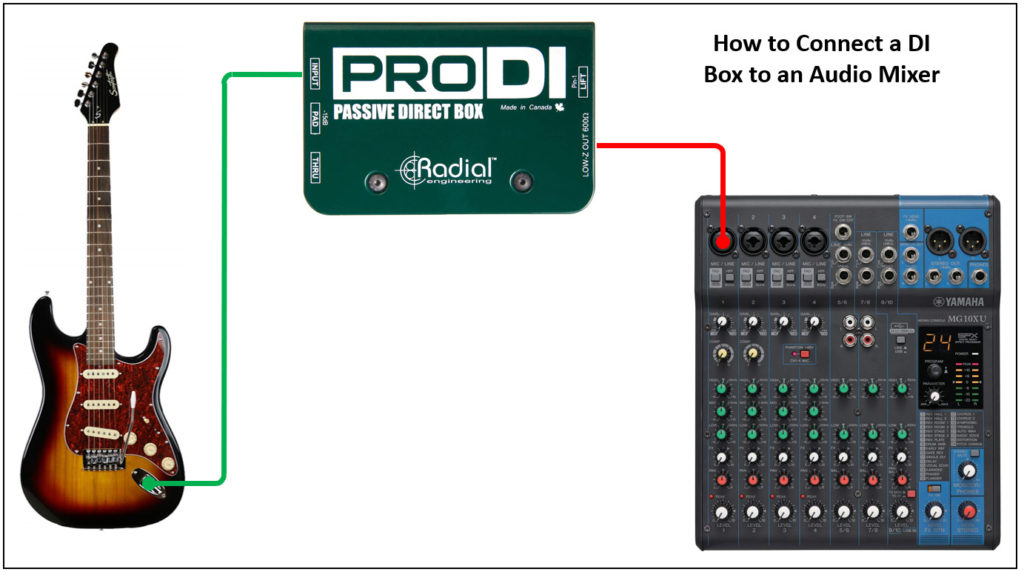
The DI box takes an unbalanced, high impedance signal and converts it to a low impedance, balanced audio signal. This helps a lot in reducing picked up noise in long-run cables.
We have a full article explaining everything you need to know about the DI box; click the link if you’d like to read more.
Decibels and Watts
One of the most confusing aspects of buying any kind of amplified pro audio gear is translating the watts printed on the box to the actual volume it can produce in real life.
Many PA and instrument speakers will proudly boast statements like 1000 watts, which seems like a lot to a casual shopper. But if you look closely at the box, there is often an asterisk, noting that this is “peak” handling.
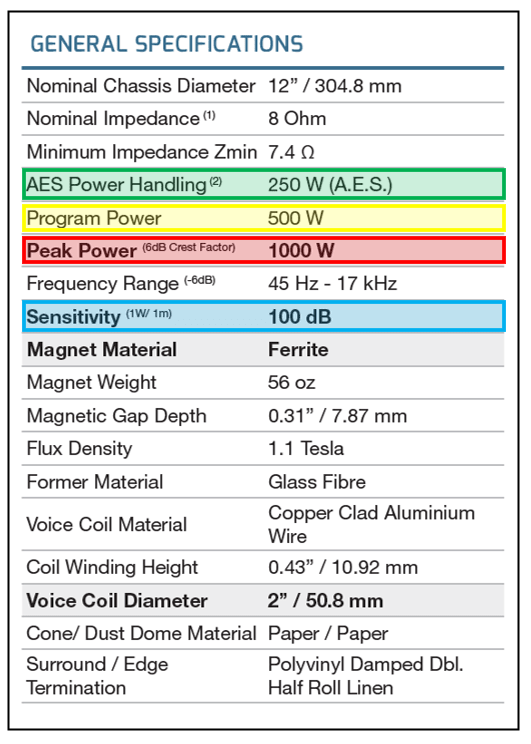
Let’s break it down: watts are how much “work” the speaker can do. Air is much harder to move than a liquid or solid, so even the best speakers are inefficient.
Speakers with a higher SPL rating or sensitivity (measured in decibels) will more efficiently handle the wattage from an amplifier and put out more volume.
The 1000 watts rating at “peak” handling just means that it can briefly put out its maximum SPL (think loud peaks in the audio). This applies to both amplifiers and speakers.
The rest of the time, it will be operating at RMS or program power. This is the “actual” power the speaker can handle and the amplifier can deliver continually without getting damaged.
So when you’re shopping for audio gear and need something loud, look for speakers and amplifiers with a higher RMS and SPL, not the watts that the box boasts. And remember what measures the loudness of a speaker is its SPL rating and not the wattage.
Get Connected
If there’s one necessary evil of audio gear, its cables. Every instrument, DI box, amplifier, speaker, and interface use cables of some kind to pass signal. But not every cable is the same.
The most common cables are 1/4″ jack cables. These are mainly seen with instruments such as guitars and synthesizers, and speaker cables. 1/4″ patch cables are also used to connect different sound gear together.
Speaker cables are specifically built to pass the signal from an amplifier to a speaker. The wiring inside is generally of larger diameter so that it can handle higher currents.
Speaker cables and instrument cables have two wires inside, one to pass signal and the other to ground. These are specified as “tip-sleeve” cables, and you can tell by looking at the jack: there will be one black line near the tip.
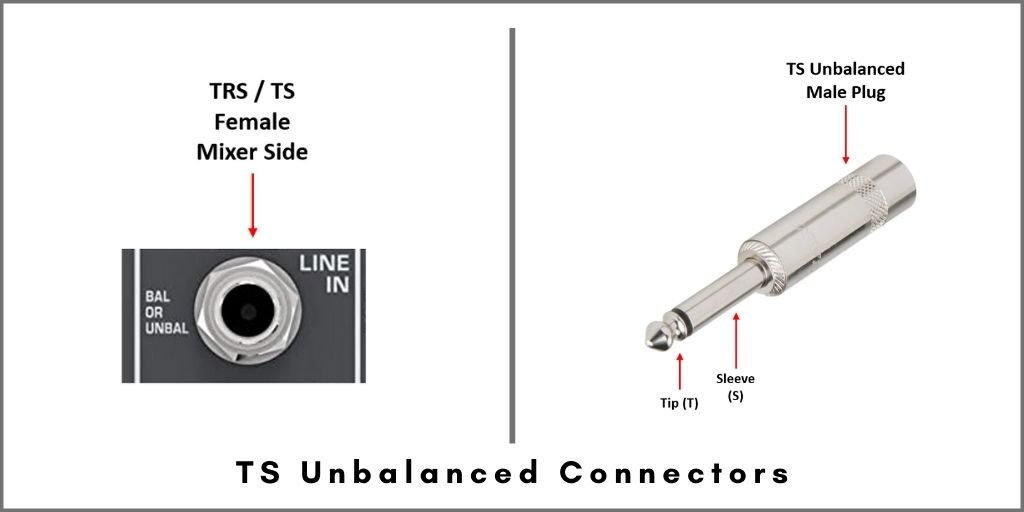
Some 1/4″ cables are “tip-ring-sleeve” (or TRS). These contain a third negative wire. You might have noticed this is similar to the microphone (XLR) cables we mentioned earlier. They will have two black lines near the tip instead of one.
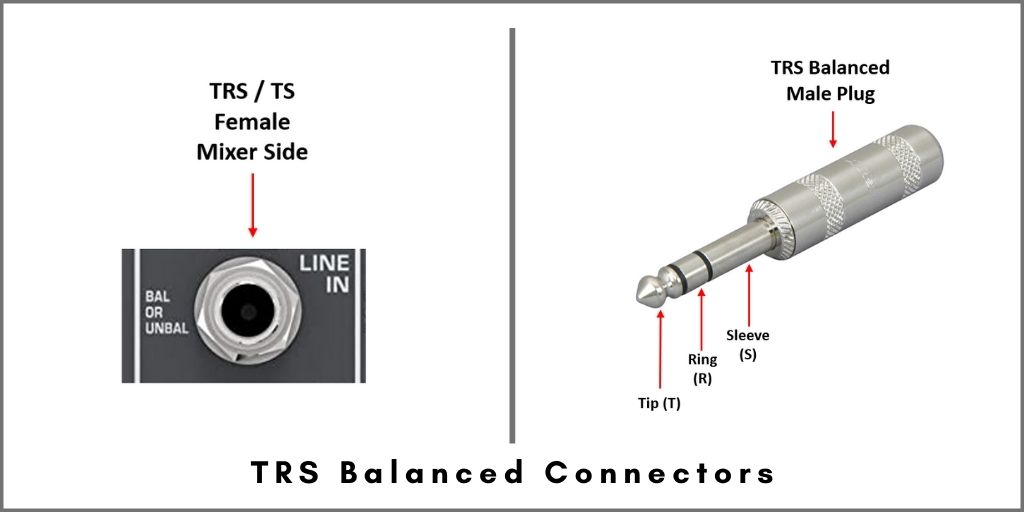
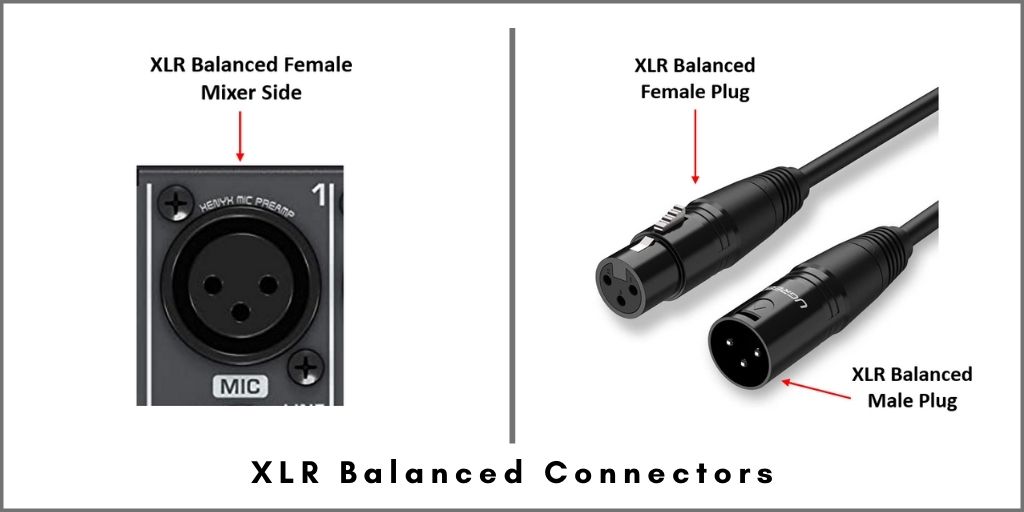
This is because TRS and XLR cables are considered “balanced” due to that third negative wire inside. Balanced cables can be run for long lengths without losing signal quality. In contrast, regular tip-sleeve cables will degrade the signal.
If you would like to know more about balanced versus unbalanced cables, check out our other handy guide.
Audio Gear Overload?
If you have any more questions or would like more information, we have a variety of articles on quite a few pro audio gear topics. Feel free to contact us at any time if you have any questions.